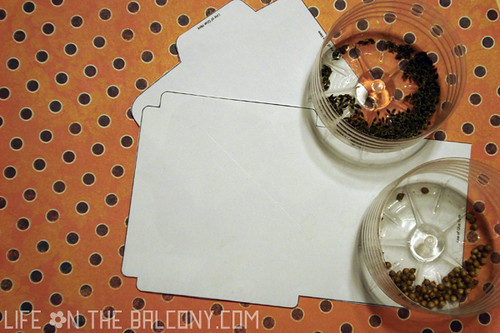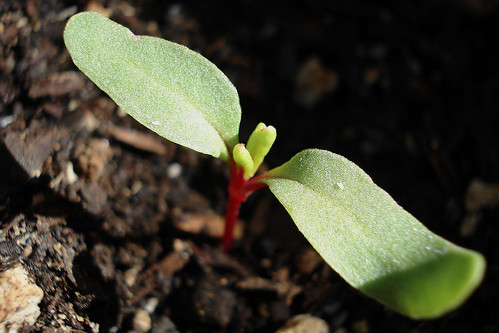With a bit of luck I can manage to grow several crops of potatoes each year, planting the first seed potatoes in October with a further planting after Christmas. Potatoes will handle quite rough soil so are a good crop to put into new ground. They are not a deep rooted plant like carrots, which will push down into the soil. Instead, the tubers grow out from the original seed potato. It is necessary to hill them as the plants grow to cover the young tubers. If you keep building up the soil around the stem of the plant they will continue to make fresh tubers in ever increasing layers. This may also be done by creating a support for the soil with rubber tires mounted on rubber tires. This is a great way of cropping for people with limited gardening space. Using this method it is also possible to grow potatoes in the milder winter climates, providing the tops are covered each night against frost.
Potatoes are well suited to growing in furrows which can be flooded with a garden hose and is the way I prefer to grow mine. To get an early start this year I planted two rows of seed potatoes in October amongst the red Flanders poppies in my Remembrance Field at Das Helwig Haus B&B at Glen Aplin on the Granite Belt of southern Queensland.
Three young Koreans came in November to work for me as WWOOFers – Willing Workers on Organic Farms and as the poppies finished flowering they removed them and hilled the potatoes.
Meanwhile I had planted a later patch of potatoes, a different variety, on the opposite corner of the field. My non-organic vegetable farming neighbors when given fresh potatoes in February, asked what chemicals I had used on the crop?
I replied, “None.” One of the secrets to growing good crops of any vegetable is to rotate your crops and never grow potatoes in the same place for at least 3 years. Repetitive growing of the same vegetable in the same ground each year will not only result in depletion of soil nutrients essential to that plant, but also a build up of pests – either leaf feeders or root borers. Potatoes appreciate feeding on rich compost or manures and need plenty of water during the growing season. I prefer to buy fresh seed potatoes each year, rather than use left over shooting potatoes from my pantry to avoid spreading any disease.
As the leaves ripen up the plants tend to fall over to the side and it is important at that time to ensure the tubers close to the surface are covered with additional earth or a mulch of hay to prevent sunburn and greening. Any potato exposed to the sunlight will acquire green skin. This green portion of the potato is poisonous and any potato showing green should be peeled deeply, or discarded.
Here the three Koreans (Ashley, Jack and Jinni) were harvesting Sebago potatoes. Jack is using a brand new stainless steel digging fork, which my father gave me for a Christmas present. The other varieties I grew were Kennebeck and Desiree. Again to avoid possible contamination of my soil, I do not compost my potato greens, but burn them. If it is possible to establish a different place each year where you can burn garden waste and then plant vegetables like melons or pumpkins in the ash, you will be rewarded with excellent crops as the heat destroys the natural pathogens lurking in most soils.
The potatoes were washed, sorted according to size and stored in our cellar room at 8 degrees Celcius.
I’m sure you know many ways of serving potatoes, but have you ever made your own potato crisps?
- Choose small to medium potatoes of an even size.
- Wash potatoes, but don’t peel.
- Slice the potatoes as thinly as possible. I have a meat slicer which cuts much thinner and neater slices than I could manage with a sharp knife.
- Thread the potato slices on to wooden skewers.
- Sprinkle salt or other flavoring over the potato slices.
- Suspend three skewers across a microwave safe bowl.
- Place the bowl in a microwave oven and cook for 7-10 minutes. The time required will depend on the thickness of your slices.
- Remove from the microwave oven, cool and strip off the skewer.
- Store in an airtight container for future use as potato crisps.















 If you have seen this tomato sickness, if you have it or had it last year. You know that it usually does not just effect 1 tomato on a plant. It was probably in the majority of your entire crop, and up to 90% of the tomatoes on each plant. The severity can vary, from very bad to maybe just a few bad tomatoes.
If you have seen this tomato sickness, if you have it or had it last year. You know that it usually does not just effect 1 tomato on a plant. It was probably in the majority of your entire crop, and up to 90% of the tomatoes on each plant. The severity can vary, from very bad to maybe just a few bad tomatoes.


 Determinate tomatoes will all grow and ripen close to the same time, within a few weeks. Meaning the plant grows to a certain size, then grows the tomatoes, then they ripen. Pretty much that is the end of that tomato plant. These are the best tomatoes to use if you are canning.
Determinate tomatoes will all grow and ripen close to the same time, within a few weeks. Meaning the plant grows to a certain size, then grows the tomatoes, then they ripen. Pretty much that is the end of that tomato plant. These are the best tomatoes to use if you are canning. Next time you head to the Greenhouse to pick a tomato plant, I hope this will help with your selection. I will spent the next few post talking more about tomatoes. I will add my favorite varieties in the coming posts. I get so many questions about Tomatoes, seems like I should spend some time on them. For right now, I think I will head out to my garden, grab a nice juicy tomato and get back to the house.
Next time you head to the Greenhouse to pick a tomato plant, I hope this will help with your selection. I will spent the next few post talking more about tomatoes. I will add my favorite varieties in the coming posts. I get so many questions about Tomatoes, seems like I should spend some time on them. For right now, I think I will head out to my garden, grab a nice juicy tomato and get back to the house.
 This pretty flower loves the shade. Do not even consider it in the sun. It also loves a moderate amount of water. That is easy, because when this little beauty is blooming usually it is still raining. It blooms in early Spring to Late Spring. The blossoms are pink or white. Obviously it gets its name from the blossom.
This pretty flower loves the shade. Do not even consider it in the sun. It also loves a moderate amount of water. That is easy, because when this little beauty is blooming usually it is still raining. It blooms in early Spring to Late Spring. The blossoms are pink or white. Obviously it gets its name from the blossom. 




 Growing your own window herb garden can be fun, rewarding and it can save you a lot of money. Any professional chef or even part time, for fun chefs can tell you that the most costly ingredients in any dish are the herbs. Even though you'll only use a pinch of this herb or a dash of that herb, buying the entire container of herbs adds up to one hefty grocery bill.
Growing your own window herb garden can be fun, rewarding and it can save you a lot of money. Any professional chef or even part time, for fun chefs can tell you that the most costly ingredients in any dish are the herbs. Even though you'll only use a pinch of this herb or a dash of that herb, buying the entire container of herbs adds up to one hefty grocery bill.





















